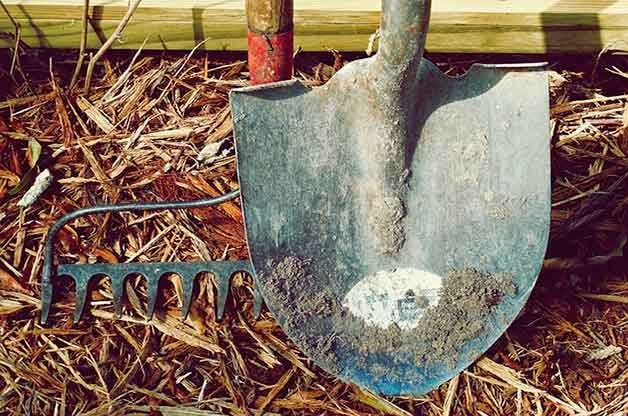12 Tips and Tricks for a Weed-Free Backyard
Updated: Feb. 28, 2022

Arm yourself with a favorite tool and use these fresh ideas to say goodbye to unwanted plants.
With a new outlook and a little elbow grease, you can more efficiently weed out undesirable plants and even have fun doing it. Whether you transform the chore into a party or hit the garden instead of the gym, these tips and tricks pave the way for a weed-free backyard.
1. Change Your Mindset
Pulling weeds is a stress reliever and workout, because the movements stretch and strengthen muscles. Plus, you burn as many as 200 calories in 30 minutes. When you’re finished, your blood pressure is lower and your mood improved.
2. Keep Supplies Handy
If tools and gloves are nearby instead of buried in a shed, it’s easier to tackle the yard. Stash a bucket with favorite weeding tools at each entryway and garage door. Or give an old mailbox new life as a convenient place to store supplies right in the garden.
3. Make Use of Spare Moments
Pluck a few dandelions while you’re waiting for a ride, when dinner is in the oven or during a shore break from another garden task. Take on one small section at a time, and before you know it an overwhelming job becomes manageable.
4. Pull Throughout the Season
The smaller the weeds, the simpler they are to remove. Getting them out of the garden before they go to seed prevents hundreds, or even thousands, of offspring next year.
5. Time It Right
Yank ’em when soil is slightly moist and soft, and pesky plants are effortless to remove roots and all. Soil that is soaked is easily damaged when you walk on it, dig in it, or cultivate it, but when it’s dry, roots get left behind and may eventually sprout… and must be pulled again later.
6. Remove Annual Weeds on a Sunny Day
As you move from one area to the next, leave seedlings on the soil surface so they quickly dry and die. As long as they haven’t gone to seed, add them to a compost pile or use them as mulch around other plants.
7. Find a Tool You Love
Long-handled hoes and cultivators are kinder to your body, minimize your time spent bending over and help conserve your energy, so you can cover more ground. Use a single-prong cultivator to carefully reach around desirable plants. To remove plants deeply rooted in the landscape, try a weed digger or garden knife.
8. Add Mulch
To prevent unwanted seeds from sprouting, add mulch. Make it extra beneficial by using materials from your garden. Spread a layer of herbicide-free grass clippings, shredded leaves or evergreen needles over the soil surface. Besides suppressing weeds, the material also conserves moisture and gives soil a boost as it breaks down. To stop difficult plants, put a layer of newspaper or cardboard down first and cover with mulch.
9. Throw a Gardening Round-Robin Party
Invite friends and neighbors to take turns tending each other’s gardens. (This is also a fun way to swap tips or plants.) Start with coffee and tea in the first garden, then celebrate the end of a full day of weeding with a potluck dinner or a wine and cheese get-together.
10. Plan, Plan, Plan
It’s possible to get ahead of weeds with good preparation and planting. Do some research for next spring and be sure to grow the right plant in the right location. You’ll be rewarded with stronger, healthier plants that outcompete the unwanted plants.
11. Enhance Soil with Compost
Spread a 1-inch layer over the soil surface of established perennial gardens. Use an auger bit to drill holes several inches deep throughout the garden bed. Top-dress with compost and aerate for stronger plants, beautiful flowers and a more productive vegetable garden.
12. Call on Chemicals
If you’re at a loss and decide to use chemicals, read and follow all label directions. Organic products made from soaps, vinegars and plant oils burn off the tops of plants, so perennial weeds may come back. If needed, try a total vegetation killer that contains glyphosate and destroys roots. Remove the bottom of a milk jug, set the jug over an individual plant, and spray (do this with organic or synthetic products to protect nearby plants). Allow it to dry before moving on.
Keep Growing! 9 Steps to Growing a Greener Backyard

